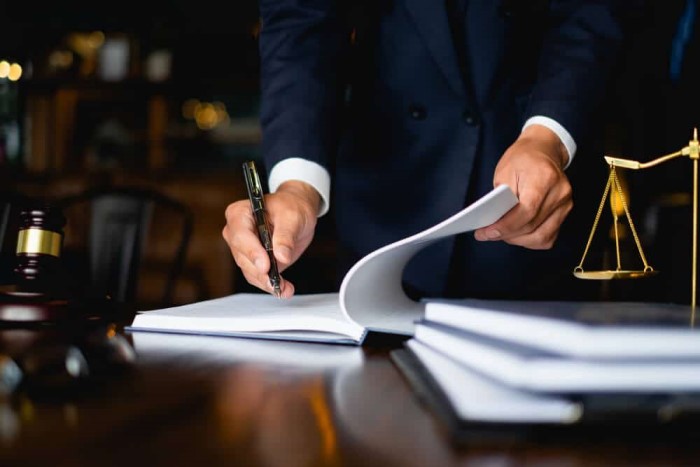Building Your Case: Essential Evidence for Abuse Lawsuits

Discover the vital steps for gathering compelling evidence to strengthen your abuse lawsuit. Learn how to build a solid case with essential evidence, ensuring justice prevails.
Introduction
In the pursuit of justice, building a strong case is paramount. For abuse lawsuits, assembling compelling evidence is not just a legal requirement but also a moral imperative. From documentation to testimonies, every piece of evidence plays a crucial role in establishing the truth and holding perpetrators accountable. In this comprehensive guide, we delve into the essential steps for gathering evidence to bolster abuse lawsuits, empowering victims to seek the justice they deserve.
Understanding Abuse Lawsuits
Abuse lawsuits encompass a range of legal actions aimed at seeking recourse for various forms of abuse, including physical, emotional, and financial harm. These lawsuits often arise in contexts such as domestic violence, workplace harassment, or institutional abuse. Building Your Case: Essential Evidence for Abuse Lawsuits forms the foundation for legal proceedings, providing the necessary framework to prove wrongdoing and secure justice for victims.
Navigating the complexities of abuse lawsuits requires a meticulous approach, starting with the gathering of evidence.
Gathering Documentation
Documentation serves as the backbone of any abuse case. It includes police reports, medical records, photographs, and any written correspondence relevant to the abuse. These documents provide tangible evidence of the harm inflicted and form the basis of legal arguments.
Collecting Testimonies
Witness testimonies can significantly strengthen an abuse case. Whether from victims, eyewitnesses, or experts in relevant fields, these testimonies provide firsthand accounts of the abuse and its impact. Sworn statements or depositions may be obtained to preserve these testimonies for legal proceedings.
Securing Physical Evidence
Physical evidence, such as forensic samples or damaged property, can provide irrefutable proof of abuse. Proper preservation and documentation of physical evidence are essential to ensure admissibility in court.
Building Your Case: Essential Evidence for Abuse Lawsuits
Building a compelling case requires a strategic approach to gathering evidence. Each piece of evidence should contribute to a coherent narrative that establishes liability and damages. Here are the essential steps to strengthen your case:
1. Documenting Incidents
Description: Record details of each incident of abuse, including dates, times, and locations.
Importance: Establishes a pattern of behavior and demonstrates the severity and frequency of the abuse.
2. Seeking Medical Evaluation
Description: Obtain medical evaluations documenting any physical or psychological injuries resulting from the abuse.
Importance: Provides objective evidence of harm and links the injuries to the abuse.
3. Preserving Digital Evidence
Description: Secure electronic communications, social media posts, or other digital evidence relevant to the abuse.
Importance: Demonstrates the intent or history of the perpetrator and corroborates victim statements.
4. Obtaining Expert Testimony
Description: Consult experts, such as psychologists or forensic specialists, to provide professional opinions on the impact of the abuse.
Importance: Adds credibility to the case and helps the court understand the nuances of abuse-related trauma.
5. Establishing Corroborating Witnesses
Description: Identify individuals who can corroborate the victim’s account or provide additional evidence.
Importance: Strengthens the credibility of the victim’s testimony and fills gaps in the evidence.
6. Presenting Documentary Evidence
Description: Compile all relevant documents, including police reports, medical records, and correspondence, to support the case.
Importance: Offers tangible evidence of the abuse and its consequences, reinforcing legal arguments.
Frequently Asked Questions (FAQs)
What types of abuse lawsuits require evidence?
Abuse lawsuits encompass various forms of harm, including physical, emotional, and financial abuse. Evidence is crucial in establishing the occurrence and impact of these abuses.
How can I prove abuse in court?
Proving abuse in court requires a combination of documentation, testimonies, and physical evidence. Consult with legal experts to determine the most effective strategies for your case.
Is it necessary to report abuse to the authorities?
Reporting abuse to the authorities is advisable, as it creates an official record of the incidents and initiates investigations that may uncover additional evidence.
Can I file a lawsuit without physical evidence?
While physical evidence strengthens a case, it is not always necessary. Testimonies, documentation, and circumstantial evidence can also be compelling in abuse lawsuits.
How long do abuse lawsuits typically take to resolve?
The duration of abuse lawsuits varies depending on factors such as the complexity of the case, the court’s schedule, and the parties involved. Some cases may be resolved relatively quickly, while others may take years to reach a conclusion.
What compensation can I seek in an abuse lawsuit?
Victims of abuse may seek various forms of compensation, including monetary damages for medical expenses, lost wages, pain and suffering, and punitive damages against the perpetrator or responsible parties.
Conclusion
In the pursuit of justice, Building Your Case: Essential Evidence for Abuse Lawsuits is indispensable. By meticulously gathering and presenting evidence, victims can strengthen their legal standing and hold perpetrators accountable. From documentation to expert testimonies, every piece of evidence serves to validate the experiences of survivors and ensure that justice prevails.
Remember, the journey towards justice may be challenging, but with the right evidence and support, survivors can reclaim their power and seek the closure they deserve.
